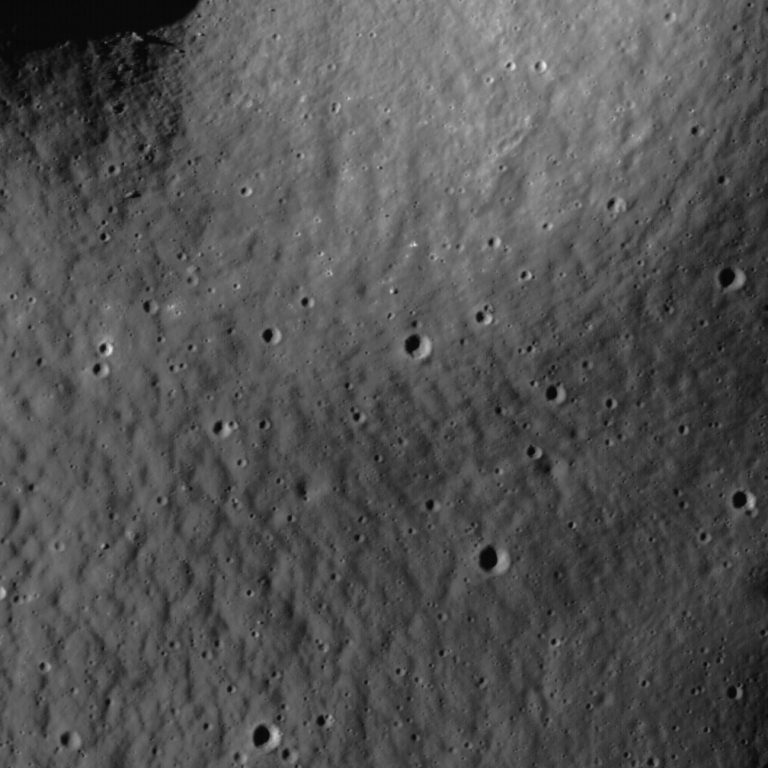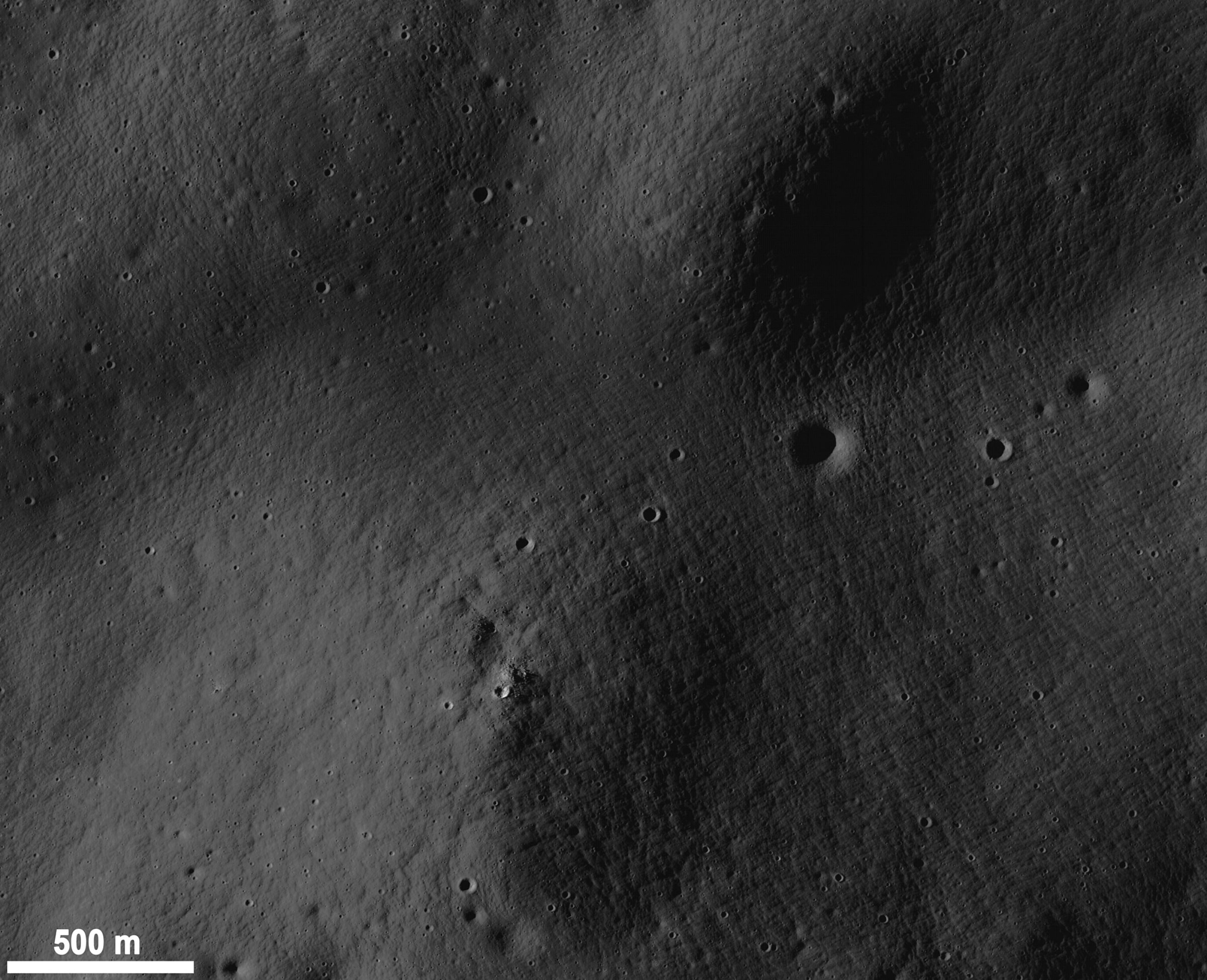Emily Lakdawalla • Jun 28, 2010
Elephant Skin on the Moon
There's a name for that funny hummocky texture to the lunar landscape: "elephant skin." I know that now, thanks to an image featured on the Lunar Reconnaissance Orbiter Camera website on May 13. Here's a closeup of what elephant skin texture in the lunar soil looks like:

It's interesting -- what causes it? The LROC image caption says it "is probably the result of slow movement involving thermal cycles of the lunar day-night and seismic shaking from meteorite impacts," but evidently lunar scientists aren't sure because "The high resolution LROC images and accurate topographic information will help sort out the causes of this long-known surface characteristic of parts of the lunar surface." It's more noticeable in images when the Sun is lighting the landscape from an oblique angle, which picks out subtle topographic features through the play of light and shadow.
The closeup above was taken directly from the LROC website, but those inline images are always just a teeny tiny fraction of what there is to be seen in the full image. Here is a larger segment of the image, itself still just a few percent of the full LROC frame. There's so much data and so little time to explore it all!

Let’s Go Beyond The Horizon
Every success in space exploration is the result of the community of space enthusiasts, like you, who believe it is important. You can help usher in the next great era of space exploration with your gift today.
Donate Today

 Explore Worlds
Explore Worlds Find Life
Find Life Defend Earth
Defend Earth

